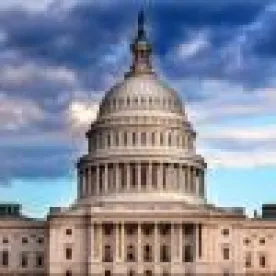As the Democrats in Washington prepare to assume control of the House of Representatives following the 2018 midterm elections, “pundits” and “experts” are speculating about the Congressional oversight that will occur over the next two years. While it is definitely true that Washington will experience far more – and far more vigorous – Congressional oversight in the next Congress, there is a lot of misinformation out there about what that means, and how it will work. It is important to understand how Congressional oversight works. The following are seven key myths regarding Congressional oversight:
Myth #1: The Democrats will be too busy investigating the Trump Administration to focus on the private sector – There is no doubt the highest profile oversight in the next two years will focus on allegations of misdeeds in the Trump Administration, but the investigations will not stop there. The truth is incoming Democratic chairs have already signaled that issues such as drug pricing, allegations of financial industry malfeasance, health care administration, data privacy, vertical integration, emerging technologies, automobile fuel economy standards, energy exploration and pipelines, industry’s role in climate change, and many other corporate issues will come under scrutiny.
Myth #2: It’s all about the subpoenas – All of a sudden, everyone is talking about imminent subpoenas, with predictions that they will rain down as soon as the new Congress is gaveled into session. The truth is subpoenas are a last resort for Committee chairs. Just as recipients fear getting served with a subpoena, committee chairs want to avoid issuing subpoenas. For that reason, committees always start with non-binding requests for information, using subpoenas as a threat, rather than a tool of first resort. Often, the fear of a Congressional subpoena is more effective than the actual document.
Myth #3: It’s all about the hearings – Conventional wisdom about the upcoming oversight makes it seem as if all witnesses will appear in public hearings, with white hot klieg lights shining down on scared witnesses and an angry Chair interrogating them. In truth, most Congressional committee witnesses never appear in public. The committees utilize a wealth of tools to obtain information from witnesses – staff briefings, staff interviews, transcribed interviews (a peculiar creation of Congressional oversight), and traditional depositions.
Myth #4: Congressional subpoenas work like other subpoenas – A lot of lawyers who have never practiced before Congress assume subpoenas issued by the legislative branch work the same way as subpoenas issued in other legal proceedings. The truth is Congressional subpoenas are a very different animal. Perhaps most importantly, they are far more difficult to enforce, and the enforcement process takes a very long time. As observers saw (and some of us experienced) a few years ago with Operation Fast and Furious, in order to enforce a Congressional subpoena, the Committee must first pass a resolution of enforcement, holding the subpoena recipient in contempt of Congress. Second, the full House (or Senate) must pass the resolution. Third, it must be referred to a prosecutor (typically the US Attorney for the District of Columbia) who must choose to seek enforcement in the courts. Alternatively, as happened with Fast and Furious, the House (or Senate) can sue on its own to enforce its subpoena. The process typically takes years and does not always succeed in compelling the production of the testimony or documents at issue.
Myth #5: It’s just like civil discovery – Many lawyers approach an oversight process as if it were civil litigation discovery. The truth is it’s very different. It is a different playing field and there are different rules. One example is that Congress takes the position that it does not have to recognize the attorney-client privilege. Another example is that Congressional overseers will often prohibit counsel from attending witness briefings or interviews. Congressional oversight is simply a different world than the Federal Rules of Civil Procedure.
Myth #6: In order to be issued, Congressional subpoenas require a majority vote of the committee – This one is a half-truth. In truth, that is the case with some committees. But most committees give sole subpoena authority to the chair. This is true, for example, with the oversight committee that has the most far-reaching jurisdiction– the House Oversight and Government Reform Committee. Incoming Chair Elijah Cummings was frequently frustrated in recent years by the power of former Chairs Darrel Issa, Jason Chaffetz and Trey Gowdy to issue subpoenas without his consent. He may be looking forward to turning those tables now. One key question to keep an eye on is whether committee rules on this issue will change in the new Congress. The rules for each committee are generally adopted anew in each Congress, though they rarely change in any significant way.
Myth #7: The law is the most important factor in determining what happens in Congressional oversight – Because Congressional oversight occurs in a legal context, with issues such as jurisdiction and subpoena power arising, people often believe that oversight, like litigation, is primarily about what the law requires. In truth, more often than not the deciding factor in how Congressional oversight proceeds is public perception – the fear of how it will look to receive a subpoena, the desire to avoid a public hearing, etc. Knowing how the law interacts with these other, more ambiguous factors is key to successfully navigating Congressional oversight.
Newly aggressive Congressional oversight is coming to a Congress near you. Do not be fooled by the myths.



 />i
/>i

